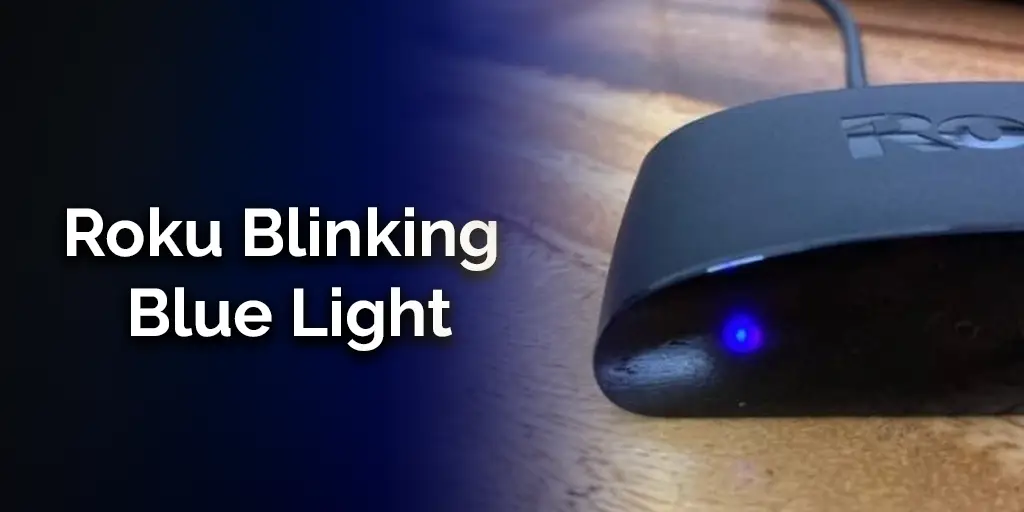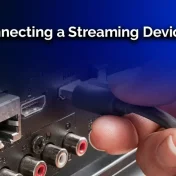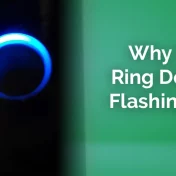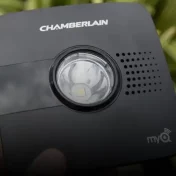The Roku device, a prominent and highly recommended streaming player, has revolutionized the way we consume television and digital content.
Its user-friendly interface, wide range of applications, and affordability have made it a favorite among many households. However, as with any electronic device, users may encounter certain issues.

One of the most commonly reported problems is the Roku Blinking Blue Light. This mysterious indicator has left many puzzled and in search of answers.
But what does this blinking light mean? Is it a signal of a grave underlying issue or just a simple glitch that can be easily fixed?
In this comprehensive guide, we’ll dive deep into the possible reasons for the Roku Blinking Blue Light and provide a range of solutions to address it.
By the end of this article, you’ll be equipped with the knowledge to diagnose and troubleshoot this problem effectively.
4 Reasons Why is Roku Blinking Blue Light – With Solutions
The mysterious Roku Blinking Blue Light can be attributed to several reasons. Being able to identify the cause is the first step towards finding an effective solution. Let’s dive into the four common reasons:
1. Power Issue

The primary cause for the blinking blue light often revolves around power discrepancies.
- Loose Connections: Ensure that the power cable is firmly connected to the Roku device and the power outlet.
- Faulty Power Adapter: Over time, power adapters may wear out. If you’ve ensured that the connection is secure but still face the issue, consider testing with a different power adapter compatible with the Roku device.
- Power Surges: Unexpected power surges can disrupt the normal functioning of electronic devices. Always use a surge protector to protect your devices.
2. Software updates

Roku devices frequently undergo software updates to enhance performance and introduce new features.
- Interrupted Updates: If the device was updating and faced an interruption, it might result in the blinking blue light. In such cases, restarting the device can often help.
- Manual Update: Sometimes, manually checking for software updates and ensuring your device is up-to-date can resolve the issue.
3. Network Connectivity Problem

Roku devices require a stable internet connection for optimal performance.
- Weak Signals: If the device is too far from the router, it might receive weak signals, leading to connectivity issues. Consider repositioning the Roku device or the router to ensure a stronger connection.
- Incorrect Network Settings: Ensure you’re connected to the correct network with the right credentials. Sometimes, simply forgetting the network and reconnecting can solve the issue.
4. Check HDMI Cables

The quality and condition of HDMI cables play a crucial role in the device’s performance.
- Loose Connections: Ensure that the HDMI cable is securely connected to both the Roku device and the TV.
- Cable Quality: Low-quality or worn-out HDMI cables can cause issues. Consider replacing old cables with new, high-quality ones.
By addressing these common causes, most users can resolve the blinking blue light issue. However, if the problem persists, there might be other underlying reasons that need a deeper look.
Some Advanced Solutions to Fix if Still, Roku Blinking Blue Light
If the basic troubleshooting steps don’t resolve the issue, it’s time to delve into some advanced solutions. Here’s what you can try:
1. Reset the Roku Device

Resetting the device can often clear out minor software glitches or bugs that could be causing the Roku Blinking Blue Light.
- Soft Reset: This can be done by navigating to the settings of your Roku device, then selecting ‘System’, followed by ‘System restart’. This will reboot your Roku without erasing any personal data.
- Hard Reset: If a soft reset doesn’t do the trick, consider a hard reset. However, be cautious as this will erase all your personal settings and data. You can perform a hard reset by locating the reset button on your Roku device, pressing, and holding it for about 20 seconds.
2. Hardware Issues can also make the light blink
At times, the root cause might be a hardware malfunction.
- Internal Faults: If you’ve exhausted all software solutions and the problem persists, there might be an internal hardware issue. Look out for any signs of physical damage or wear and tear.
- Professional Inspection: In cases of suspected hardware faults, it’s best to consult with a professional or reach out to Roku’s official support. They might offer repairs or provide insights on the next steps.
3. Contact Roku Support
If all else fails, it’s time to bring in the experts. Roku has a dedicated support team that can guide users through intricate problems.
- Documentation: Before reaching out, ensure you have all necessary documentation, such as the device’s model number, purchase details, and a clear description of the issue at hand.
- Official Channels: Always use Roku’s official support channels to avoid scams or misinformation. They offer support via phone, chat, and email.
By diligently following these advanced solutions, users stand a good chance of resolving the more stubborn instances of the Roku Blinking Blue Light issue.
How Roku’s Indicator Lights Work
To effectively troubleshoot the Roku Blinking Blue Light, it’s essential to understand the language of Roku’s indicator lights.
These lights serve as a communication tool, indicating the device’s status or alerting users to potential issues.
1. Steady White Light:
This indicates that the Roku device is on and functioning normally. You should see this light when the device is actively in use.
2. Blinking White Light:
A blinking white light usually signals that the remote is trying to pair with the Roku device. If this light persists, there might be issues with the remote’s pairing process.
3. Blinking Blue Light (the focus of our guide):
As discussed, this can signify several issues, from power problems to software glitches or hardware malfunctions.
4. No Light:
If there’s no light on your Roku device, it’s either off or not receiving power. Ensure that the power connections are secure and the device is plugged into a working outlet.
5. Red Light:
A steady or blinking red light often indicates a low power warning. This can happen if the device isn’t receiving adequate power from the power adapter or if there’s an issue with the power supply.
Understanding these indicator lights and their meanings can arm users with the knowledge to not only address the Roku Blinking Blue Light but also troubleshoot a range of other potential issues.
Read Also: How to Hook Up Roku to TV Without HDMI
Preventive Measures
While troubleshooting is essential, prevention is always better than cure. By following some best practices, you can minimize the chances of encountering the Roku Blinking Blue Light and other related issues.
1. Regularly Update Software:
Roku frequently releases software updates that fix known bugs and improve device performance. Regularly checking for and installing these updates can prevent many issues.
2. Maintain Optimal Placement:
Ensure your Roku device is placed in a location with good ventilation to avoid overheating. Also, it should be within a good range of your Wi-Fi router to maintain a stable connection.
3. Use Quality Cables:
Invest in high-quality HDMI and power cables. Poor quality cables can lead to connectivity issues and even damage the device.
4. Avoid Power Surges:
Always connect your Roku device to a surge protector. This simple step can protect it from unexpected power spikes that could cause damage.
5. Regular Reboots:
Rebooting your Roku device once in a while can clear minor software glitches and improve performance.
6. Backup Settings:
Regularly backup your Roku settings and preferences. In case you need to perform a hard reset, this will make it easier to restore your device to your preferred state.
By integrating these preventive measures into your routine, you can ensure a smoother and more enjoyable Roku experience.
Alternative Solutions
For the minority who might not find solace in the previously mentioned solutions, there are a few alternative approaches to consider when dealing with the Roku Blinking Blue Light.
1. Change Display Type:
Sometimes, the display settings can cause issues with the Roku device.
- Navigate to ‘Settings’ on your Roku device.
- Select ‘Display type’ and choose a different resolution or display option.
- Restart your device to see if the issue is resolved.
2. Factory Reset:
As a last resort, consider resetting your Roku to its original factory settings. This will erase all personal data, so ensure you’ve backed up important information.
- Go to ‘Settings’ -> ‘System’ -> ‘Advanced system settings’ -> ‘Factory reset’.
- Follow the on-screen instructions to complete the reset.
3. Try a Different TV or Monitor:
Occasionally, the issue might not be with the Roku device but with the TV or monitor. Test your Roku device on a different display to rule out this possibility.
4. Inspect for Physical Damage:
Give your Roku device a thorough physical examination. Look for signs of damage, especially around the ports. If you spot any issues, it might be time for a replacement or repair.
5. Seek Community Help:
Roku has a vibrant online community where users discuss problems and solutions. Consider posting about your issue on these forums. Chances are, someone else has faced a similar problem and might have a unique solution to offer.
While these alternative solutions cater to rarer scenarios, they can be the key to resolving the blinking blue light issue for some users.
Safety Precautions
While troubleshooting the Roku Blinking Blue Light, it’s crucial to ensure that you’re taking necessary precautions to avoid any potential harm or damage to the device.
1. Unplug Before Inspecting:
Before you physically inspect or make any changes to the Roku device, ensure it’s unplugged from the power source. This reduces the risk of electrical shocks.
2. Avoid Opening the Device:
Unless you’re a trained professional, do not attempt to open the Roku device. Doing so can cause more harm than good and might void any existing warranty.
3. Keep Away from Water:
Ensure that the Roku device is kept away from any liquids. If you suspect any liquid damage, unplug the device immediately and let it dry thoroughly before attempting to use it again.
4. Use Original Accessories:
Always use the original or Roku-recommended power adapters, HDMI cables, and other accessories. Using incompatible accessories can lead to issues or even damage the device.
5. Avoid Force:
If the Roku device or any of its ports seem jammed, avoid using excessive force. Instead, gently wiggle and check for any obstructions.
6. Stay Updated:
Roku, like many tech companies, often releases safety and maintenance guidelines. Stay updated with their official communications to ensure you’re using the device safely.
Remember, while our devices are robust, they’re not invincible. A little caution can go a long way in ensuring their longevity and your safety.
Frequently Asked Questions (FAQs)
Dealing with the Roku Blinking Blue Light can lead to numerous questions. Here, we’ve compiled and answered some of the most frequently asked questions on this topic:
Is Roku blinking blue light dangerous?
No, the blinking blue light is not inherently dangerous. It’s an indicator that there’s an issue that needs addressing, but it doesn’t pose any immediate risk to the user.
What does blue light on Roku mean?
The blue light on Roku typically indicates a potential issue related to power, software updates, network connectivity, or HDMI connections. It’s a signal for the user to check and troubleshoot the device.
How to fix Roku blinking blue light constantly?
The constant blinking blue light can be fixed by:
- Ensuring a proper power connection.
- Checking for software updates.
- Ensuring stable network connectivity.
- Checking HDMI cables.
If these steps don’t work, consider the advanced solutions provided earlier in this guide.
Does the blinking blue light mean my Roku is dying?
Not necessarily. While the blinking blue light indicates an issue, it doesn’t automatically mean the device is failing. In many cases, simple troubleshooting can resolve the problem.
Read Also: Why is Roku Blinking Red Light?
Conclusion
The Roku Blinking Blue Light is a common concern among Roku users, but as we’ve seen, it’s often an issue with straightforward solutions.
Whether it’s a simple power adjustment, a software update, or a more in-depth hardware inspection, the key is to approach the problem systematically and patiently.
Roku devices are designed for durability and performance, and with the right care and maintenance, they can provide a seamless streaming experience for years.
Always remember to prioritize safety, regularly update your device, and when in doubt, seek expert advice.
Additional Resources
- Official Roku Support: A direct link to Roku’s official support page can be invaluable for users seeking expert advice.
- Roku Community Forums: These forums are bustling with active users discussing various issues, solutions, and tips related to Roku devices.
- Roku Device Manual: Always a good idea to have a link to the device’s official manual for users to refer to.



